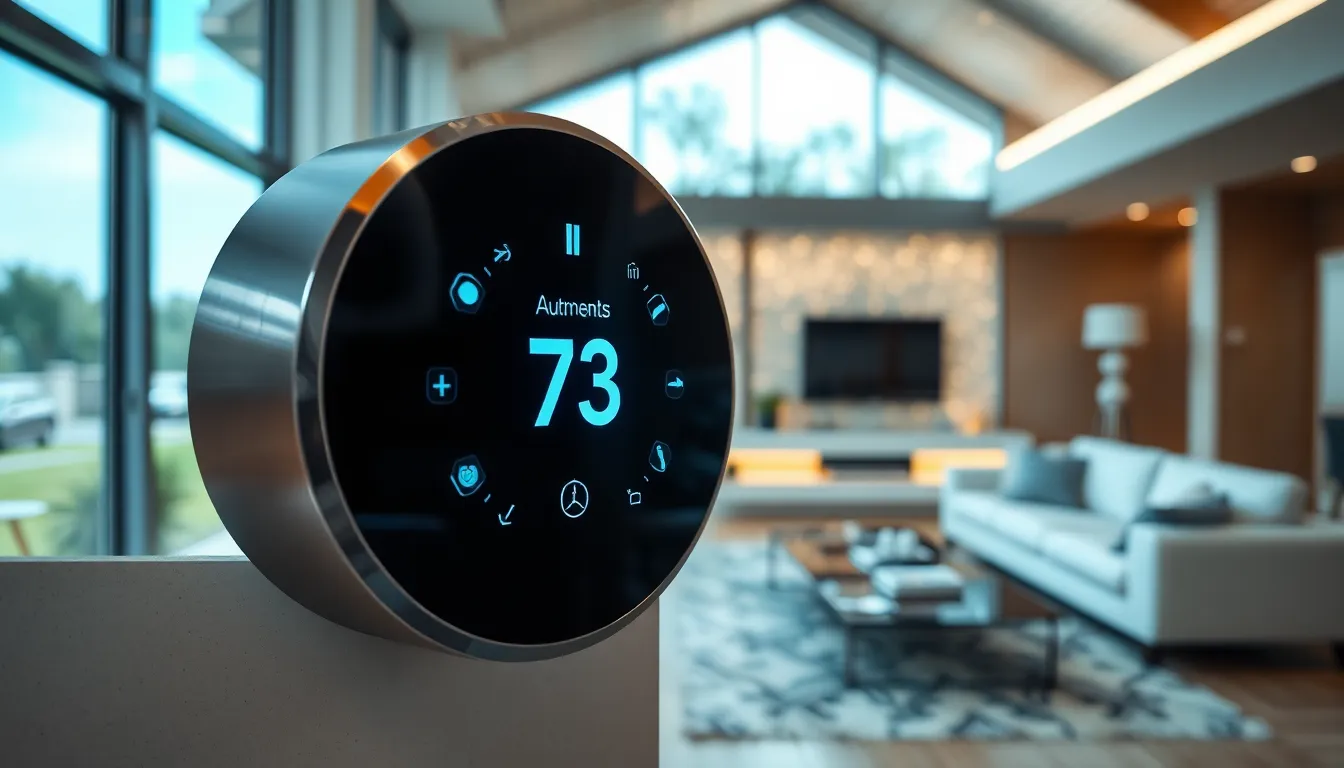In a world where your toaster might be smarter than your average bear, the Internet of Things (IoT) is revolutionizing everyday life. But with great connectivity comes great responsibility—or at least that’s what Uncle Ben would say if he were in the cybersecurity game. Enter DDoS attacks, the digital equivalent of a mob storming a pizza joint. They’re not just a nuisance; they’re a growing threat that can turn your smart fridge into a virtual bouncer, shutting down services and leaving you in the cold.
As more devices join the IoT party, the risk of DDoS attacks skyrockets. Hackers are always on the lookout for the next unsuspecting gadget to exploit. Understanding how these two tech phenomena are intertwined isn’t just for the tech-savvy—it’s essential for anyone who wants to keep their digital life secure. Buckle up as we dive into this fascinating, if slightly chaotic, world of IoT and DDoS attacks.
Table of Contents
ToggleUnderstanding DDoS Attacks
DDoS attacks pose significant risks to IoT devices and services. By overwhelming targets with excessive traffic, these attacks disrupt crucial functions and can lead to extensive downtime.
Definition and Mechanism
DDoS stands for Distributed Denial of Service. This type of attack harnesses multiple compromised devices, creating a botnet that floods a targeted server or network. Attackers leverage the collective power of numerous devices, making it difficult to mitigate the assault. The influx of traffic causes legitimate requests to be denied, disrupting operations and accessibility.
Types of DDoS Attacks
Various types of DDoS attacks exist. Traffic-based attacks, like UDP floods and ICMP floods, aim to saturate bandwidth. Application layer attacks target specific applications, such as HTTP floods, which can bring down web services. Protocol attacks exploit weaknesses in network protocols, like SYN floods, which manipulate the TCP handshake process. Each category presents unique challenges and affects IoT systems differently, underscoring the need for robust cybersecurity measures.
The Growth of the Internet of Things (IoT)

The Internet of Things continues expanding, connecting billions of devices worldwide. It includes everything from smart home gadgets to industrial sensors.
IoT Overview
IoT represents a network of devices that communicate and share data with each other. These devices enhance convenience and efficiency in daily tasks. Sensors embedded in appliances enable real-time monitoring and management, reducing energy consumption and improving performance. As of 2023, over 15 billion IoT devices are in use. This growth presents unique opportunities and challenges, particularly in cybersecurity.
IoT Devices and Their Vulnerabilities
Smart devices often have minimal security features. Many manufacturers focus on functionality rather than robust protection. IoT devices can include security cameras, smart thermostats, and wearable health trackers. Each of these devices can serve as entry points for cyberattacks. When compromised, they may become part of a larger botnet used for DDoS attacks. Passwords are frequently weak or default settings remain unchanged, increasing susceptibility. Regular software updates and user awareness are essential to address these vulnerabilities effectively.
The Intersection of DDoS Attacks and IoT
DDoS attacks increasingly target IoT devices, highlighting the vulnerabilities of connected technology. These attacks exploit weak security measures, making IoT environments particularly susceptible.
How Are DDoS Attacks Leveraged in IoT Environments?
DDoS attacks exploit the inherent weaknesses of IoT systems by using compromised devices to generate overwhelming traffic. Attackers typically harness botnets comprised of thousands of compromised IoT devices, such as cameras and routers. Each device contributes to the massive volume of requests sent to a target, effectively crippling server capacity. This surge in traffic results in significant downtime and service interruptions for various applications. Given the limited security features and often unchanged factory settings of many IoT devices, maintaining cybersecurity becomes challenging.
Case Studies of DDoS Attacks on IoT Systems
Several notable DDoS attacks have targeted IoT infrastructures, demonstrating the risks involved. One well-known incident involved the Mirai botnet, which launched an attack in 2016 by harnessing weakly secured IoT devices. The Mirai botnet impacted several major services, including DNS provider Dyn, resulting in extensive outages across popular websites. Another case occurred with a range of smart home devices that were compromised, leading to a significant attack on a European ISP. These examples illustrate the pressing need for improved security measures in IoT ecosystems to mitigate the risk of future DDoS attacks.
Mitigation Strategies for IoT-related DDoS Attacks
Mitigating the risk of DDoS attacks on IoT devices involves implementing several essential strategies.
Best Practices for IoT Security
Establishing strong passwords is crucial. Default credentials must change to prevent unauthorized access. Regular software updates and firmware patches protect against newly discovered vulnerabilities. Monitoring network traffic helps identify unusual patterns that may signal an ongoing attack. Employing network segmentation limits the impact of any potential breach. Incorporating encryption protocols enhances data security during transmission between devices.
Role of Network Service Providers
Network service providers play a vital role in protecting IoT devices from DDoS attacks. They can deploy advanced filtering systems that detect and mitigate excessive traffic directed at customer networks. Offering consistent traffic monitoring helps identify anomalies early. In addition, service providers should implement rate limiting to control the flow of data packets during an attack. Collaborating with manufacturers to enhance device security presents a proactive approach to safeguarding the ecosystem. Providing customer education on security best practices further strengthens overall defense against potential threats.
The relationship between DDoS attacks and the Internet of Things is increasingly critical as more devices connect to the digital landscape. As IoT devices become commonplace their inherent vulnerabilities make them prime targets for cybercriminals. The potential for widespread disruption from DDoS attacks highlights the urgent need for enhanced security measures.
By understanding the risks and implementing best practices users can better protect their devices and networks. Collaboration among manufacturers service providers and consumers is essential to create a more secure IoT environment. As technology evolves staying informed and proactive will be key to mitigating the threats posed by DDoS attacks in the IoT realm.



